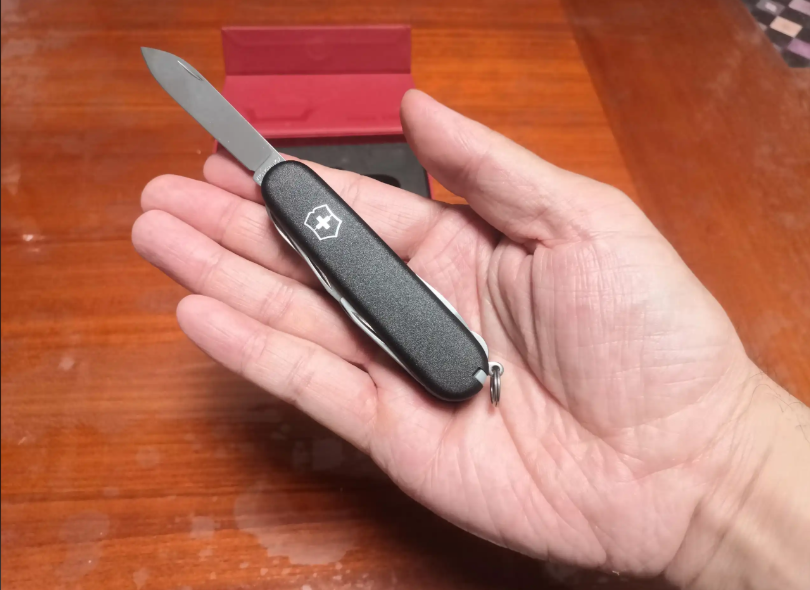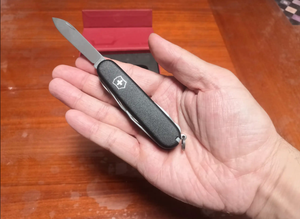
The inspection method for Swiss Army knives Inspection and certification services for goods and factories
The Swiss Army Knife, as a model of multi-functional tool knives, its quality directly affects the safety of use, the reliability of functions, and the brand value. To ensure that the product meets the brand standards and customer requirements, a full-process quality control system from raw materials, production processes to finished product delivery must be established. This article will, based on the structural characteristics and functional classification of the Swiss Army Knife, systematically introduce its inspection items, inspection methods, factory inspection review points and industry standards, providing professional guidelines for purchasers, quality inspectors and manufacturing enterprises.
I. Classification and Quality Focus of Swiss Army Knives
(1) Classification by Product Line
Pocket Knife Series: Includes specifications such as 58mm, 91mm, 111mm, etc. The main mainstream brand is Victorinox.
Swiss Card Series: Card-style design, emphasizing lightness and portability
Swiss Clamp Series: Incorporates heavy-duty functions such as clamps, with a highly complex structure
(2) Key Quality Control Points
Blade steel: Typically uses high-carbon stainless steel. Hardness (HRC 52-56) and corrosion resistance need to be tested.
Handle material: Celidor (Celiro) injection molding, aluminum handle or wooden handle. It is necessary to inspect the fit and surface treatment.
Functional components: Scissors, screwdrivers, wood saws, bottle openers, etc. should be able to move smoothly without any sticking.
II. Swiss Army Knife Inspection Standards and Inspection Basis
(1) Main Reference Standards
Victorinox enterprise standards (such as function completion degree, surface processing, etc.)
GB/T 18001 - General Technical Conditions for Cutting Tool Products
EN ISO 8442 - Safety Requirements for Metal Materials in Contact with Food
CPSC/ASTM F963 - Safety Standards for Toys and Products with Sharp Edges in the US Market
(2) Key Points of Factory Audit
Quality Management System
Does it have ISO 9001 certification? Are there complete records of incoming material inspection (IQC) and process inspection (IPQC)?
Whether the key raw materials such as steel and plastic particles can be traced back to the supplier's batches
Production process control
Do the processes such as stamping, heat treatment, polishing, and assembly have operation instructions and inspection records?
Regular calibration of the blade sharpening equipment's accuracy, and monitoring of the anti-rust treatment process parameters
Social Responsibility and Compliance
Does the production environment meet the ISO 45001 occupational health and safety requirements?
Have the exported products passed the environmental protection regulations such as RoHS and REACH inspections?
III. Finished Product Inspection Items and Methods
1. Appearance Quality Inspection
Surface Treatment: The blade is polished evenly without scratches, and the handle has no shrinkage, burrs, or bubbles.
Printing and labeling: The brand logo is clear and in the correct position. The Victor cross mark is intact without any defects.
Assembly gap: All functional components open and close smoothly, and the handle and the blade body are not loose.
2. Conformity of dimensions and specifications
Total length verification: For the 91mm series, the tolerance is ±1mm. Sampling inspection is conducted using a caliper.
Blade thickness: The thickness of the main blade should comply with the design drawings (usually 2.5 - 3.0mm)
Component size of functions: For example, whether the size of the screwdriver head complies with the standard specifications
3. Function and Performance Testing
Smooth opening and closing: The force required for each tool to extend and retract is moderate, without any sticking or looseness.
Locking mechanism (such as the 111mm series): The wire lock or back lock should be firmly secured to prevent accidental closure.
Sharpness test: The main blade can easily cut through A4 paper without any pulling sensation.
Durability test: The scissors cut the copper wire 500 times without chipping, and the screwdriver remains undamaged after repeated use.
4. Safety and Reliability
Blade tip and edge: No sharp burrs. Compliant with child safety standards (if applicable)
Corrosion resistance test: Salt spray test for 24 hours without rust (for blades and metal components)
Material safety: The blade and handle materials must pass the heavy metal migration test.
IV. Sampling Plan and Decision Rules
Sampling standard: According to GB/T 2828.1, the general inspection level II is selected. The AQL value is set as:
Critical Defect: 0 (such as functional failure, lockout malfunction)
Major Defects: 1.5 (such as insufficient sharpness, printing errors)
Minor Defects: 4.0 (such as minor scratches, packaging flaws)
Defect Classification Example:
Serious defect: The surgeon is unable to lock, and the scissors cannot cut.
Main defects: Inconsistent opening and closing, size deviation
Minor defects: Slight color difference on the handle, indentation on the packaging box
Quality inspection result: If any serious defect is found, the entire batch is deemed不合格; if the main defect exceeds the AQL standard, the batch will be rejected.
V. Packaging and Labeling Requirements
Sales Packaging
Each military knife should be individually sealed or packaged in a box to prevent scratches during transportation.
The color box should be marked with the model number, list of functions, material, applicable standards and safety warnings.
Transport packaging
The outer box should have labels indicating "moisture-proof" and "fragile", and a partitioned inner lining to prevent collisions.
The exported products must be affixed with the origin label and the compliance mark (such as the CE mark).
Documents and Traceability
For each batch of products, a certificate of conformity and a material safety data sheet (if applicable) must be provided.
The production batch number and date should be traceable through the system back to the assembly workstation.
VI. Common Quality Issues and Improvement Suggestions
Typical Defects: Rust on the blades, cracking of the handle, loosening of functional components
Process control points: It is recommended to set CTQ control points at the heat treatment, polishing, and assembly and debugging stations.
Factory inspection improvement direction: Introduce functional automated testing equipment and establish SPC statistical process control for key dimensions.
Summary
The Swiss Army Knife, as a precise and multi-functional tool, its quality consistency relies on strict raw material control, process specifications, and factory inspections. Through systematic factory audits and shipment inspections, combined with appearance, functionality, safety, and durability tests, the risk of customer complaints can be significantly reduced. It is recommended that purchasers focus on reviewing the quality system and testing capabilities of the suppliers when choosing them, and conduct pre-production sample confirmations before mass production to ensure that the products meet the brand standards and safety requirements for use.
分享这个商品

The inspection method for Swiss Army knives Inspection and certificati
The Swiss Army Knife, as a model of multi-functional tool knives, its quality directly affects the safety and reliability of its usage.
